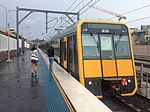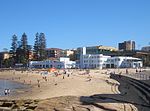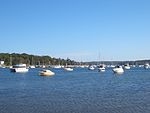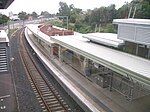Cronulla, New South Wales

Cronulla is a suburb of Sydney, in the state of New South Wales, Australia. Boasting numerous surf beaches and swimming spots, the suburb attracts both tourists and Greater Sydney residents. Cronulla is located 26 kilometres south of the Sydney central business district, in the local government area of the Sutherland Shire. Cronulla is located on a peninsula framed by Botany Bay to the north, Bate Bay to the east, Port Hacking to the south, and Gunnamatta Bay to the west. The neighbouring suburb of Woolooware lies to the west of Cronulla, and Burraneer lies to the southwest. The Kurnell peninsula, the site of the first landfall on the eastern coastline made by Captain James Cook in 1770, is reached by driving northeast out of Cronulla on Captain Cook Drive.
Excerpt from the Wikipedia article Cronulla, New South Wales (License: CC BY-SA 3.0, Authors, Images).Cronulla, New South Wales
Nicholson Parade, Sydney Cronulla
Geographical coordinates (GPS) Address Nearby Places Show on map
Geographical coordinates (GPS)
| Latitude | Longitude |
|---|---|
| N -34.05744 ° | E 151.15219 ° |
Address
St Aloysius Catholic Church
Nicholson Parade
2230 Sydney, Cronulla
New South Wales, Australia
Open on Google Maps









